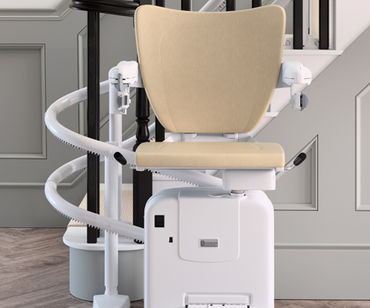As Safe as Houses
For many elderly people remaining independent in their own homes is important to them. Improved living standards, better healthcare and more awareness surrounding good diet and exercise has resulted in many people enjoying a good quality of life well into their 80’s and 90’s. Having said this, older people, especially frail, elderly people are more vulnerable to accidents particularly falls.
Falls
More than 3,500 people in England and Wales die every year as a result of a fall and nearly 1/3rd of a million require hospital treatment. Of those, many elderly people never fully recover from the physical or psychological impact of their injuries.
Over a quarter of falls result in a hip fracture with their treatment annually costing the NHS £2billion. Falls are a significant and growing public health issue in an ageing population, with those over 65’s at increased risk of them. Many tragically result in death.
What causes a Fall?
Many of the fatal and non-fatal accidents to older people are attributable to frailty and failing health. This can lead to failure or slowness to see and avoid risks. By drawing the attention of older people and their carers to danger spots and unsafe habits then accidents can be reduced. Older people are more at risk of injuring multiple body areas and alarmingly one in five falls in women over 55 results in a fracture.
Other injuries include bruising, crushing, cuts, wounds from piercing, and strains. Although most falls don’t result in a serious injury, being unable to get up exposes the person to the risk of hypothermia and pressure sores. Unfortunately, the most serious accidents involving elderly people usually happen on the stairs or in the kitchen, with 60% of deaths resulting in accidents on stairs of steps.
The cause of a fall is often multi-factorial, involving both environmental hazards and an underlying medical condition. Strength, balance and gait, a decline in vision, mental health problems and dietary deficiencies diet are all contributory risk factors. Although prescription medicines are seldom the cause, they can also be a major risk factor and 40% of people over 80 fall.
Move or Adapt?
Bearing this in mind, many elderly people consider moving to a more suitable property, or remaining in their home and modifying it. Adaptions may involve creating a downstairs wet room and bedroom downstairs. Whilst this is a solution to a lack of mobility and safety using the stairs, this is often not what people want t. Major structural works affect the feel and dynamics of a property and may adversely affect the resale value.
Stair lifts have long been a cost-effective and aesthetically pleasing option. First developed in the 1920’s by CC Crispen, his invention was called the inclinator. By 1930 the Inclinator Company of America was established to help victims of polio.
The early stair lifts were designed for straight staircases, but not all homes have them, many have curved or even spiral staircases and require a specially designed curved stair lift.


